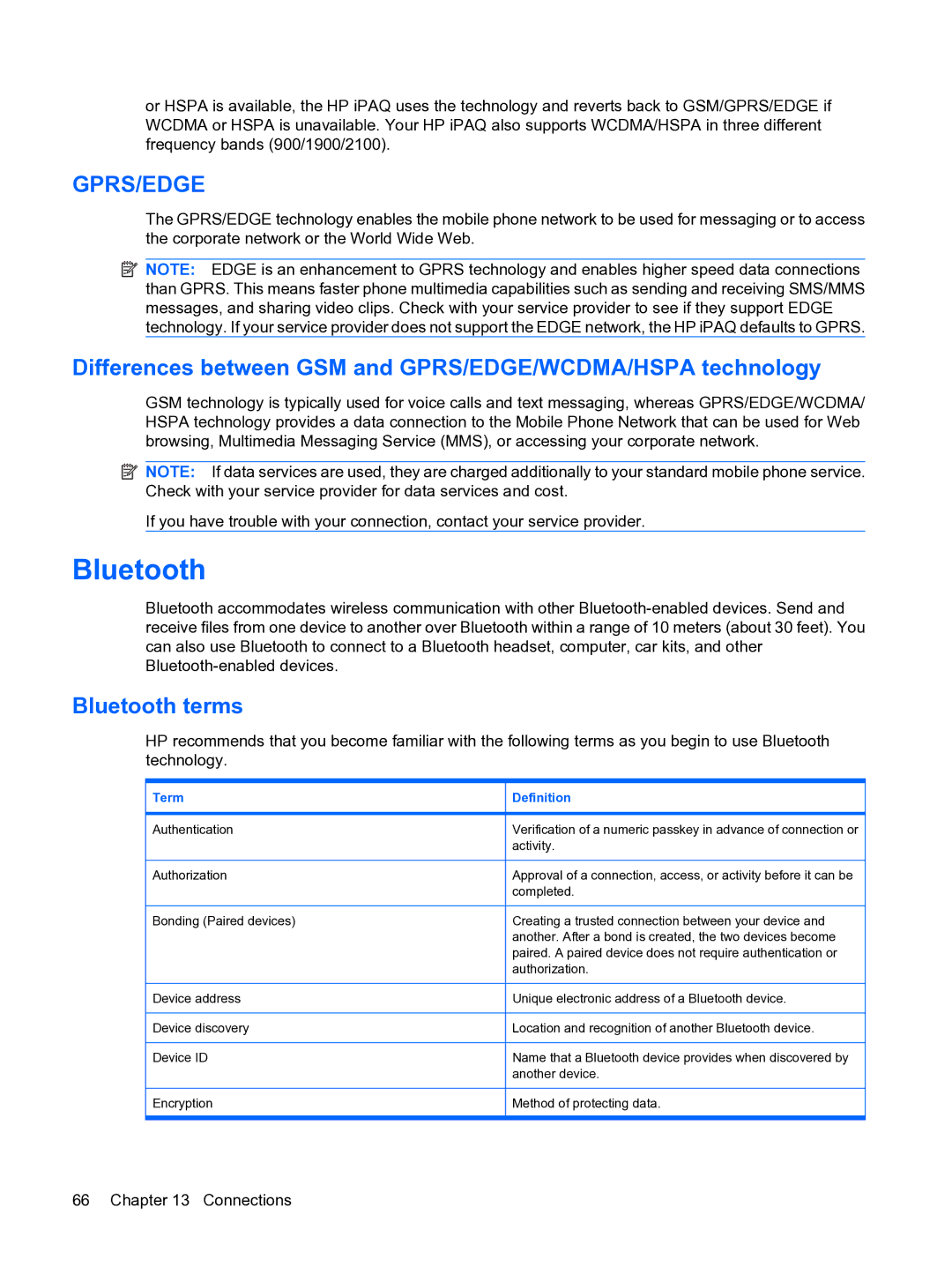
or HSPA is available, the HP iPAQ uses the technology and reverts back to GSM/GPRS/EDGE if WCDMA or HSPA is unavailable. Your HP iPAQ also supports WCDMA/HSPA in three different frequency bands (900/1900/2100).
GPRS/EDGE
The GPRS/EDGE technology enables the mobile phone network to be used for messaging or to access the corporate network or the World Wide Web.
![]() NOTE: EDGE is an enhancement to GPRS technology and enables higher speed data connections than GPRS. This means faster phone multimedia capabilities such as sending and receiving SMS/MMS messages, and sharing video clips. Check with your service provider to see if they support EDGE technology. If your service provider does not support the EDGE network, the HP iPAQ defaults to GPRS.
NOTE: EDGE is an enhancement to GPRS technology and enables higher speed data connections than GPRS. This means faster phone multimedia capabilities such as sending and receiving SMS/MMS messages, and sharing video clips. Check with your service provider to see if they support EDGE technology. If your service provider does not support the EDGE network, the HP iPAQ defaults to GPRS.
Differences between GSM and GPRS/EDGE/WCDMA/HSPA technology
GSM technology is typically used for voice calls and text messaging, whereas GPRS/EDGE/WCDMA/ HSPA technology provides a data connection to the Mobile Phone Network that can be used for Web browsing, Multimedia Messaging Service (MMS), or accessing your corporate network.
![]() NOTE: If data services are used, they are charged additionally to your standard mobile phone service. Check with your service provider for data services and cost.
NOTE: If data services are used, they are charged additionally to your standard mobile phone service. Check with your service provider for data services and cost.
If you have trouble with your connection, contact your service provider.
Bluetooth
Bluetooth accommodates wireless communication with other
Bluetooth terms
HP recommends that you become familiar with the following terms as you begin to use Bluetooth technology.
Term | Definition |
|
|
Authentication | Verification of a numeric passkey in advance of connection or |
| activity. |
|
|
Authorization | Approval of a connection, access, or activity before it can be |
| completed. |
|
|
Bonding (Paired devices) | Creating a trusted connection between your device and |
| another. After a bond is created, the two devices become |
| paired. A paired device does not require authentication or |
| authorization. |
|
|
Device address | Unique electronic address of a Bluetooth device. |
|
|
Device discovery | Location and recognition of another Bluetooth device. |
|
|
Device ID | Name that a Bluetooth device provides when discovered by |
| another device. |
|
|
Encryption | Method of protecting data. |
|
|
